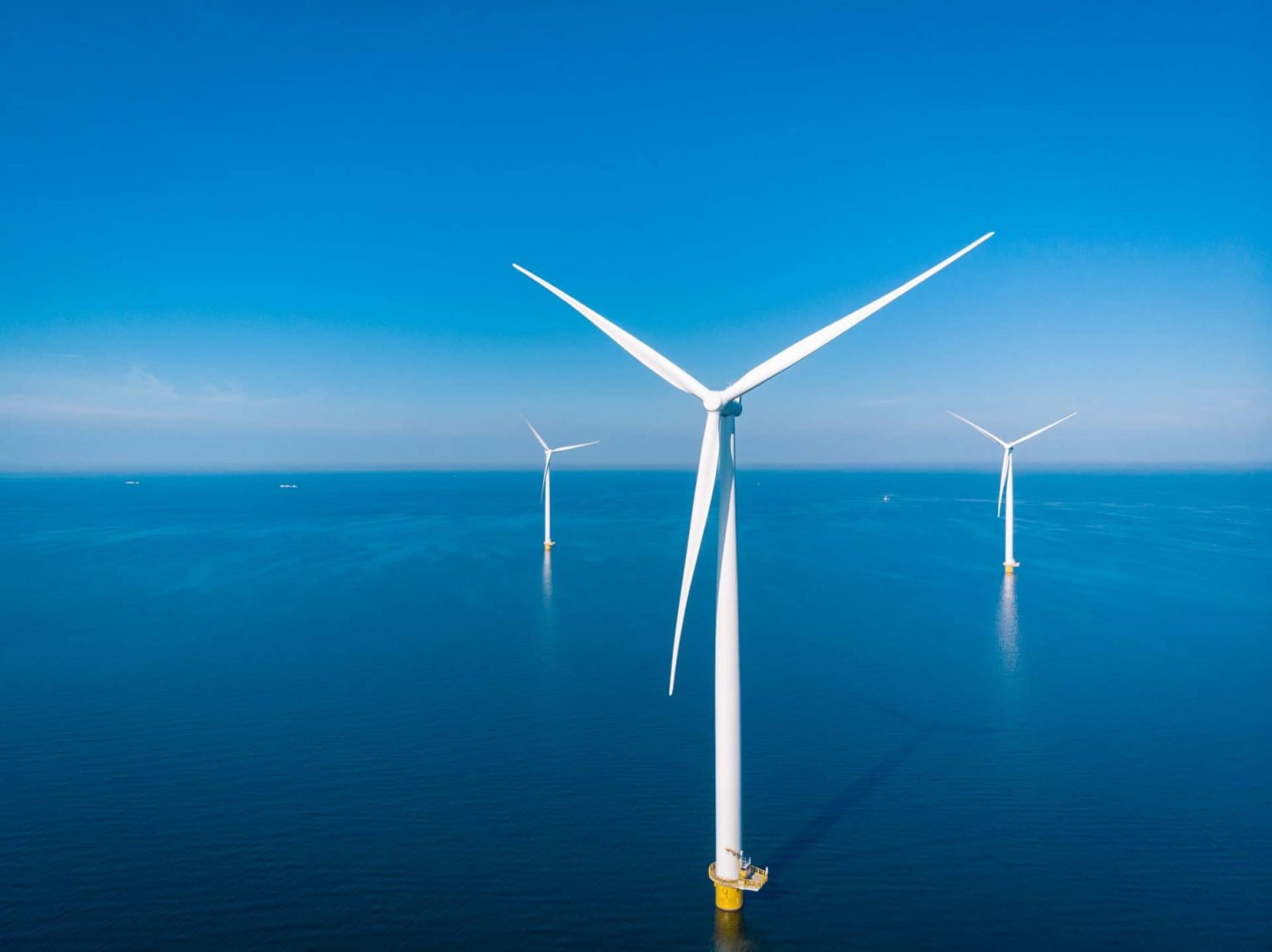
Pioneered in Europe, offshore wind continues to mature, reducing costs and unlocking new markets, in Asia – led by Taiwan – and the US, where north-east coastal states are driving efforts to exploit the country’s significant offshore wind resources.
A globalised offshore wind market will be able to push down costs further and unlock fresh sources of demand, as new contractors, subcontractors, and other entrants, continue to infuse the sector with innovation and competition.
However, despite big gains made in Europe, where the North Sea hosts most of the world’s offshore wind capacity, the share of offshore wind in the overall energy mix is small.
According to the Offshore Wind Outlook 2019, published by the International Energy Agency (IEA), offshore wind supplies just 0.3% of global power generation. Onshore wind accounts for about 6% in comparison.
Global forecast.
In 2018 installed offshore wind capacity stood at 23GW, with annual deployment growing by 30% annually (IEA).
Over 80% of installed capacity is installed in Europe, in the North Sea. The UK leads with 8GW, followed by Germany with over 6GW.
Supported by policy targets and falling technology costs, the IEA estimates – based on stated policies – global offshore wind capacity is set to increase fifteen-fold from 23GW in 2018 to around 370GW by 2040. Annual offshore wind capacity additions are set to double over the next five years, rising to over 20GW annually from 2030.
Beyond 2030, cost competitiveness of offshore wind is expected to help maintain pace of growth.
Regional Breakdown.
Today Europe and China lead the offshore wind market and this dominance is expected to continue over the next 20 years, with both markets accounting for nearly three-quarters of installed capacity by 2040. From the early 2020s the US, Taiwan, South Korea and Japan, will account for the rest of the growth.
Europe
To 2040 the EU will account for 40% of the global offshore market, increasing installed capacity to almost 130GW by then, according to IEA’s forecast based on stated policies. By then annual investment in offshore will reach $17bn, from $11bn today. In 2040 offshore wind will provide more than one-in-six kilowatt-hours generated in the EU.
China
According to Fitch China has emerged as one of the fastest expanding wind markets globally. There is a national growth target of 5GW by 2020, but, according to Fitch, cumulative 2020 provincial-level targets in Jiangsu, (3500MW), Fujian (2000MW) and Guangdong (2000MW) exceed the national target.
US
Based on current state policies, the US will go from just 30MW of installed capacity today to nearly 40GW of installed capacity by 2040, with related investment totalling $100bn and accounting for 3% of electricity supply.
The US alone could add nearly 30GW by 2040, based on collective targets by states, including New York (9GW), New Jersey (7.5GW), Massachusetts (3.5GW), Connecticut (2GW), Virginia (2.6GW). Potentially this pipeline could increase further if the Federal government holds outer continental shelf lease sales for sites off California and the west coast state adopts an industry advised target of 10GW by 2045, achievable using floating wind technology.
State-level policies in many cases are crafted to ensure the US optimises local content opportunities from the outset and developers are responding by pledging tens of millions of dollars in port upgrades and workforce training.
Emerging Markets.
After the EU, China and the US, a few markets, including Taiwan, Japan, India and South Korea will drive global growth to 2040.
Taiwan deserves special mention. Global Wind Energy Council (GWEC) Market Intelligence forecasts Taiwan is set to become the second largest offshore wind market in Asia.
With a current target in place for 5.7GW of offshore wind capacity by 2025, Taiwan’s President Tsai Ing-wen announced in November 2019 that Taiwan plans to add an additional 10GW of capacity between 2026 and 2035, doubling its current target.
According to GWEC the global wind industry has ‘its sights set on Taiwan to be the next big offshore wind market’.
Challenges.
As a technology poised for rapid growth, offshore wind faces challenges. A key one is the establishing supply chains able to deliver projects efficiently and cost-effectively, while limiting project risk.
Governments have a critical role to play in terms of providing long-term visibility with ambitious goals so the industry can be confident in there being enough annual capacity buildout to support supply chain investments, in training, port upgrades, manufacturing, and servicing facilities.
Governments are also crucial in terms of directing public funds to support R&D to de-risk new and untried innovations that can potentially drive down the cost of offshore wind, for example, the UK’s Offshore Renewable Energy (ORE) Catapult.
Environmental Considerations.
Offshore wind has potential far-reaching impacts on marine wildlife, including fishes, mammals, birds and bats, as well as other ocean users, like commercial fishing. As the nascent US offshore wind sector has recently experienced, requirements for adequate and detailed environmental impact assessments are now more complex, to understand cumulative impact of hundreds of turbines in the water.
In the UK the Crown Estate blocked the expansion of Race Bank Offshore wind farm citing environmental concerns. Denmark has been revising its permitting procedures to ensure offshore wind expansion occurs in such a way as to minimise permitting challenges and potential conflicts arising from environmental impacts.
Grid Bottlenecks.
As countries gear up to build gigawatts of capacity, the grid has emerged as a critical part of the challenge. Germany is undertaking grid upgrades to ensure that offshore wind power landing in the north of the country can be transported to demand loads in the south.
At a higher level there are calls for countries around the North Sea need to implement a harmonised regulatory and economic framework to support a ‘meshed offshore grid’, as envisaged in the EU-funded Progress on Offshore Meshed HVDC Transmission Networks (Promotion) project.
As the cost of energy storage falls, the technology could help bolster onshore grid systems to accept more offshore wind power.
How grid upgrades are done depends on country-by-country specifics, such as how electricity transmission and distribution is regulated. In the case of the US, several transmission system operators serve the east coast, making it challenging to achieve a strategic overview in terms of the best approach to expand the grid efficiently and cost-effectively.
Opportunities.
Increasingly governments see offshore wind is a chance to revitalise industry, breathing new economic life into ports and local economies, providing local companies in sectors as diverse as shipbuilding, vessel chartering, steel fabrication, electrical engineering, and software/IT, with a potential new sector to provide services and goods into.
In Taiwan, offshore wind turbine manufacturer Siemens Gamesa has teamed up with Yeong Guan Group to set up a factory at Taichung port to make turbine castings, to support the localisation of this type of production.
CDWE, a joint venture between DEME Offshore and Taiwanese business CSBC, has signed contracts for the transport and installation of foundations and turbines at the Zhong Neng offshore wind farm.
The US lags behind other markets in terms of projects entering construction, but that hasn’t stopped states attracting investment from European developers. In Connecticut Orsted and its local joint venture partner Eversource have committed to invest $57.5m for upgrades to New London State Pier, to create an offshore wind staging hub.
Contingent on their Constitution Wind project winning Connecticut’s offshore wind solicitation the companies have pledged to also invest $100m in local initiatives, including small business loan funds, as well as training scholarships and apprenticeships.
Oil and Gas Cooperation.
Overall spending on offshore wind power reached $20bn in 2018. The IEA forecasts projected global annual spending for the next decade to double. Growth in offshore wind provides opportunities to companies that already provide similar and relevant services in oil and gas.
Some of the leading offshore wind developers, including Orsted, Equinor and Shell, are historic oil and gas majors, though Orsted is unique in having sold its fossil fuel assets to focus on renewable energy.
The IEA estimates that 40% of the full lifetime costs of a standard offshore wind project has significant synergies with the offshore oil and gas sector. That translates into a $275bn market opportunity in Europe in IEA’s analysis based on stated policies but could be as high as $360bn. Construction represents more crossover opportunities than O&M.
As Equinor is already showing, the oil and gas industry has experience and knowledge that can be leveraged when it comes to floating platforms for offshore wind. The developer chose Kvaerner, which builds concrete structures for the offshore oil and gas industry, to provide the 11 floating concrete hulls for its 88MW Hywind Tampen floating wind project, which will generate clean power for operating the Snorre and Gullfaks platforms.
Aside from the turbines, virtually all other elements of the offshore wind supply chain represent an opportunity for oil and gas players, from project development and permitting to installation and balance of plant, to maintenance and inspection work and eventual decommissioning.
Attollo is a key supplier to the offshore energy industry, if you think we can help get in contact!
Share this insight


